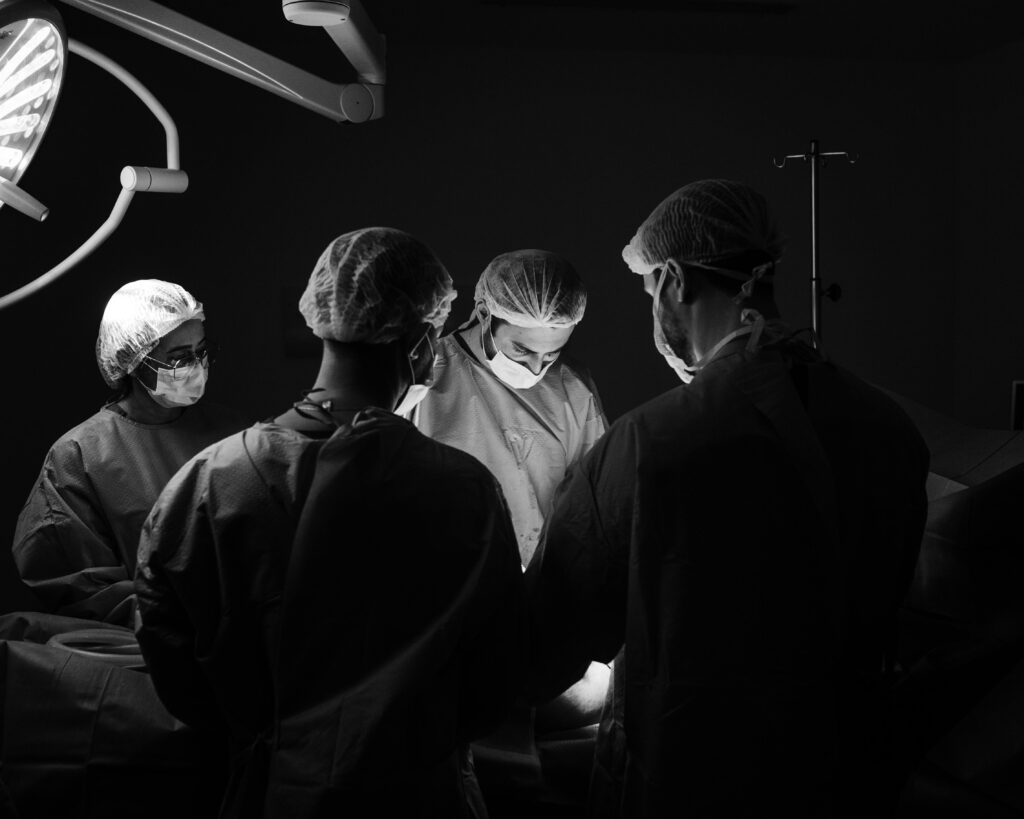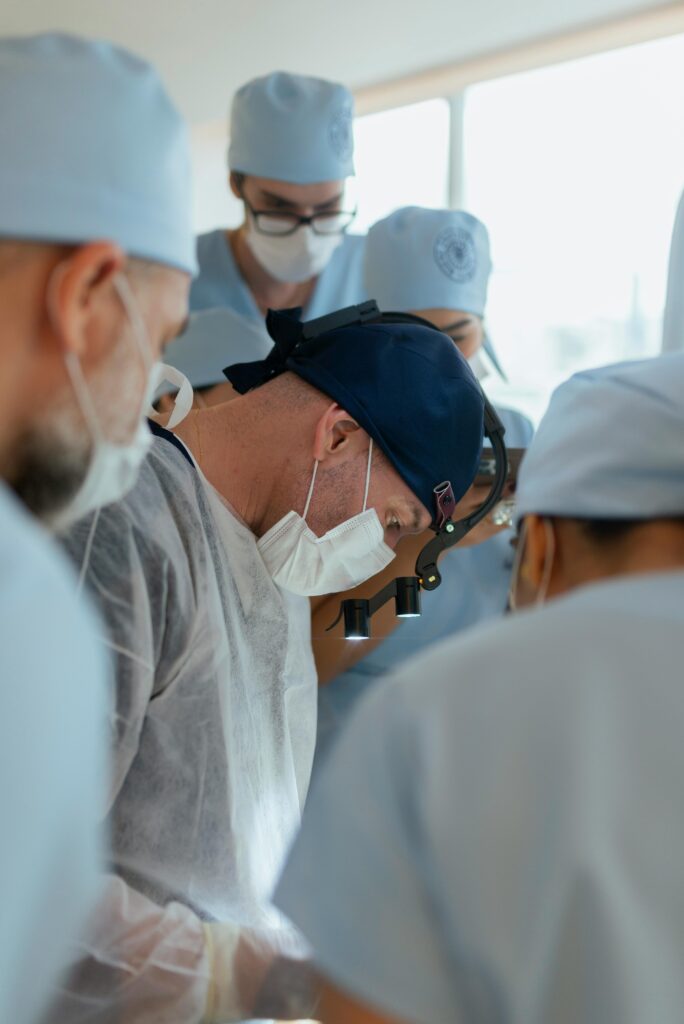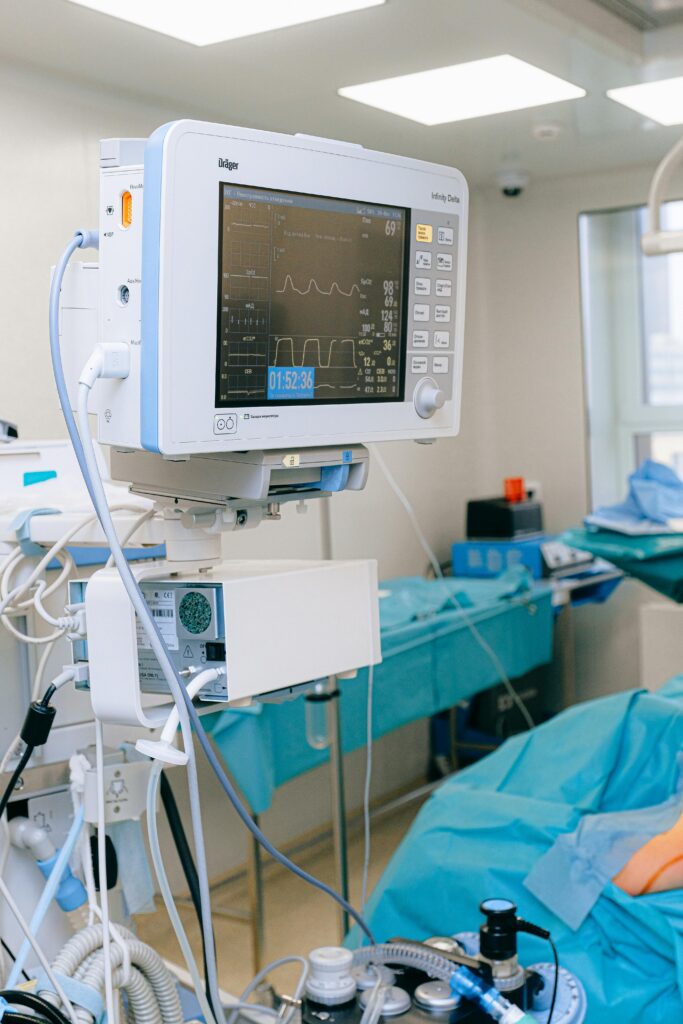
Nestled in Baner, Wisdom Hospital emerges as a beacon of exceptional healthcare, distinguished as one of India’s premier private quaternary care facilities.
At the heart of our excellence lies the Haematology & Bone Marrow Transplant (BMT) department, a vital cornerstone of our institution.
Here, we specialize in delivering advanced Haematology and BMT treatments, ensuring accessibility to care for individuals navigating intricate blood disorders.

Guided by a philosophy rooted in innovation, collaboration, confidentiality, empathy, and integrity, our team of esteemed transplant specialists commands international recognition. With years of profound experience, we have successfully conducted numerous transplants, catering to patients from diverse corners of the globe, each confronting distinct blood disorders.
At Wisdom Hospital’s Haematology and BMT center in Pune, our approach to combating cancer and blood diseases such as leukaemia, lymphoma, myeloma, and other transplant-inducing conditions is multidisciplinary in nature. Our unwavering dedication extends to crafting personalized treatment blueprints for every patient, regardless of age, meticulously tailored to address their unique and evolving needs throughout the transplant journey.

At Wisdom Hospital, our approach to Haematology and Bone Marrow Transplantation (BMT) is inherently patient-centric, guided by a steadfast commitment to holistic care. We recognize that every patient journey is unique, and thus, we prioritize personalized treatment plans tailored to individual needs.
From the moment a patient steps through our doors, they are enveloped in a culture of compassion, empathy, and unwavering support. Our multidisciplinary team of experts collaborates closely with patients and their families, ensuring open communication, shared decision-making, and comprehensive education every step of the way. By placing patients at the heart of everything we do, we empower them to navigate their healthcare journey with confidence, dignity, and hope.
The journey of Bone Marrow Transplant (BMT) at Wisdom Hospital begins with Phase 1: The Pre-BMT Phase. This crucial stage involves comprehensive patient assessment and meticulous preparation. Through diagnostic testing and evaluation of the patient’s overall health, we ensure readiness for the transplant. The conditioning process is also initiated during this phase to prime the patient for the upcoming transplant, laying the groundwork for a successful journey ahead.
Phase 2 marks a significant milestone in the BMT journey – Stem Cell Transfusion. Here, stem cells, sourced either from the patient’s own body (autologous) or a donor (allogeneic), are transfused into the patient. This pivotal step represents the actual transplantation of the bone marrow, symbolizing hope and renewal for our patients.
As the transplant takes root, Phase 3, The Post-BMT Phase, comes into focus. This phase is dedicated to monitoring and supporting the patient’s recovery journey. Our team remains vigilant in managing potential complications, maintaining immune suppression, and ensuring proper engraftment of the transplanted cells. Through diligent care and unwavering support, we strive to optimize the patient’s well-being and celebrate the success of their transplant journey.
At Wisdom Hospital, we pride ourselves on our state-of-the-art infrastructure and a team of internationally trained specialists, dedicated to delivering unparalleled healthcare solutions. Our comprehensive offerings encompass transfusion services, cutting-edge laboratories, and a fully-equipped radiation oncology unit, ensuring a seamless continuum of care for our patients.
Our key features include an exclusive unit catering exclusively to the city, complemented by round-the-clock Advanced Critical Care Services. Our transplant suites, outfitted with HEPA filters, provide a conducive environment for recovery, while our Adult and Care Unit offers isolation beds for optimal patient safety. Additionally, we provide outpatient daycare services and an extensive range of medical interventions, spanning from Chemotherapy and Immunotherapy to Blood Transfusion, Endoscopy, Bronchoscopy, and Dialysis.
Operating round-the-clock, our Transfusion Medicine Department stands as a beacon of reliability, offering a diverse array of blood components, including platelet apheresis, NAT-tested blood components, peripheral stem cell harvesting, bone marrow processing, and stem cell preservation through cryopreservation. Furthermore, our facility is equipped with a Gamma Irradiator to meet the most stringent standards of safety and quality.
Our laboratory services encompass an extensive spectrum, including Haematology, Flow Cytometry, HCA, Microbiology, Drug Assays, and Histopathology, ensuring accurate and timely diagnoses for our patients.
At Wisdom Hospital, we specialize in diagnosing and treating a broad spectrum of blood disorders and blood cancers. From addressing anaemia and marrow failure syndromes to managing coagulation disorders and acute and chronic leukaemia, our expertise extends to myelomas, lymphomas, myeloproliferative, and lymphoproliferative disorders.
Our consultative haematology services offer comprehensive solutions, including Allogeneic and Autologous transplants utilizing bone marrow, peripheral blood stem cells, and cord blood stem cells for both benign and malignant disorders, ensuring personalized and effective treatment plans for every patient.
A bone marrow transplant serves as a therapeutic beacon, aiming to replace a patient’s compromised bone marrow with healthy marrow cells. This intricate procedure involves the procurement of bone marrow or peripheral blood stem cells and serves as a cornerstone in the treatment arsenal for a myriad of blood-related ailments, encompassing leukaemia, lymphoma, and select autoimmune disorders.
Central to this therapeutic journey lies the indispensable role of bone marrow. Nestled within the inner sanctums of bones, this soft, spongy tissue orchestrates the symphony of blood production. Within its confines dwell primitive cells endowed with remarkable versatility – the stem cells. These cellular architects possess the remarkable ability to metamorphose into various blood cell lineages, including red blood cells, white blood cells, and platelets.
Bone marrow, the veritable epicenter of haematopoiesis, manifests in two principal forms: red and yellow. In the realm of childhood, red marrow reigns supreme, brimming with the vitality of stem cells. However, the transition to adolescence heralds a metamorphosis, as a significant fraction of red marrow surrenders to the encroaching embrace of yellow marrow, replete with adipose infiltrations. In this stage, red marrow finds refuge in select bastions of the skeletal architecture, including the hip bones, breastbone, ribs, shoulder blades, skull, spine, arms, and distal femurs.
The patient’s voyage unfolds at our esteemed BMT Centre, commencing with a meticulous medical assessment, embracing a multidisciplinary treatment ethos, and the implementation of a central venous catheter for seamless access to care.
In the crucible of Step 2, stem cells are harvested from either the bone marrow or peripheral blood through apheresis. Whether sourced from a donor for allogeneic transplant or the patient for autologous transplant, this phase lays the foundation for the therapeutic voyage ahead.
The dawn of the transplantation odyssey heralds the Conditioning Phase, characterized by the administration of chemotherapy, radiation therapy, or a fusion of both modalities. By judiciously impairing bone marrow function, this phase sets the stage for disease eradication, with select treatments potentially administered in an outpatient milieu to optimize patient comfort and convenience.
At the crescendo of anticipation, the Transplantation Phase unfolds, as donor bone marrow or stem cells are infused, akin to a life-affirming transfusion. This pivotal moment marks the inception of the post-BMT epoch.
Step 5 encapsulates the vigilant surveillance and supportive care pivotal in fostering a nurturing environment for engraftment, fortifying patients against potential infectious adversaries.
Emerging from the crucible of transplantation, Step 6 heralds the dawn of engraftment and early recovery. Signs of nascent bone marrow or stem cell engraftment typically manifest within 2 to 3 weeks post-transplantation, as monitoring and supportive care continue to shepherd patients towards the threshold of discharge.
The final leg of the journey sees patients embarking on the shores of Long-Term Recovery, characterized by their discharge from the center, comprehensive discussions on ongoing clinical considerations, and the gradual reintegration into their daily rhythms. Encouraging routine follow-ups serves as a beacon, illuminating the path towards preempting potential long-term complications.
Our Center’s Distinctive Features
Understanding the Spectrum of Bone Marrow Transplantation
The landscape of bone marrow transplantation unfolds with an array of approaches, tailored to the unique interplay of donor compatibility and transplant methodologies. Broadly categorized into two primary types, each variant embodies a distinct therapeutic paradigm:
Autologous Bone Marrow Transplant:
In this paradigm, the patient emerges as their own beacon of hope. Harvesting the patient’s own bone marrow or stem cells, cryopreservation heralds a reservoir of vitality for future therapeutic endeavors.
Allogeneic Bone Marrow Transplant:
A symphony of generosity unfolds as donors step forth, offering a lifeline of hope. This approach entails the procurement of bone marrow or stem cells from a donor, be it a familial tie or an altruistic gesture from an unrelated individual boasting a compatible HLA profile. The transplant itself marks a culmination of this benevolent exchange, ushering in a new chapter of healing.
Exploring Variations in Allogeneic Transplants
Within the realm of allogeneic transplants, a tapestry of diversity unfurls, each variant encapsulating a unique constellation of donor-patient dynamics:
HLA (Immune)-Match Related Donor (Siblings) Transplant: In this familial saga, siblings emerge as beacons of hope, bearing the gift of genetic compatibility with a complete HLA match.
HLA (Immune)-Matched Unrelated Donor Transplant: A testament to the unity of humanity, unrelated donors extend the hand of compassion, embodying a complete HLA match despite lacking familial ties.
Haplo Identical Donor Transplant: In a symphony of genetic harmony, haploidentical donors, often biological parents or half-matched siblings, offer a tapestry of shared genetic heritage, epitomizing resilience in the face of genetic disparity.
Umbilical Cord Blood Transplant: A testament to the circle of life, umbilical cord blood emerges as a beacon of hope, offering a reservoir of stem cells immediately post-birth, untethered by the constraints of perfect matching.
Traversing the Transplant Process
Following the harvest, a meticulous filtration process ensues, purging extraneous particles and fortifying the reservoir of vitality. In the crucible of the laboratory, a symphony of precision unfolds, encompassing counting and screening to prepare the harvested cells for their transformative infusion.
Patient-Centric Discernment
Central to the tapestry of transplantation lies the patient’s narrative, woven with the thread of medical necessity and individualized care. Guided by the discerning eye of medical professionals, the choice between transplant types emerges as a testament to patient-centric care, enshrined in the ethos of healing and hope. With a steadfast gaze fixed on the horizon of wellness, bone marrow transplantation stands as a beacon of resilience, offering solace amidst the tumult of blood disorders and cancer types.
Within the intricate tapestry of human physiology, a delicate equilibrium exists between bleeding and clotting. When injury strikes, blood coagulation springs into action, orchestrating the formation of clots to staunch the flow and safeguard against excessive blood loss. Yet, this equilibrium is not invulnerable, susceptible to disruption by a myriad of disorders that tip the scales, precipitating either excessive bleeding or inappropriate clotting.
Bleeding disorders unfurl a landscape marred by impaired clot formation, paving the path for profuse bleeding even from minor wounds or surgical incisions. Among the pantheon of bleeding disorders, we encounter:
Haemophilia: A genetic saga unfolding in the realms of clotting factor deficiency, particularly Factor VIII (haemophilia A) or Factor IX (haemophilia B). Chronic joint and muscle bleeding cast a pall over the afflicted, underscoring the need for vigilant management to forestall chronic debilitation.
Von Willebrand Disease: A symphony of deficiency in von Willebrand factor (VWF), heralding a spectrum of bleeding manifestations, from innocuous bruising to perilous bleeding episodes, particularly in the aftermath of surgical endeavors.
Platelet Disorders: In the domain of platelet dysfunction lies a tapestry of aberrations, spanning from impaired production to compromised adhesion or aggregation, delineating a landscape fraught with easy bruising and mucosal hemorrhages.
Clotting disorders weave a narrative of hypercoagulability, setting the stage for insidious thrombotic events that threaten life and limb. Among the constellation of clotting disorders, we encounter:
Deep Vein Thrombosis (DVT): A silent menace lurking in the depths of venous conduits, predisposing individuals to limb-threatening embolic sequelae, exemplifying the dire consequences of unchecked thrombogenicity.
Pulmonary Embolism (PE): A harrowing saga of embolic migration culminating in life-threatening respiratory compromise, underscoring the imperative of prompt recognition and intervention.
Stroke: A narrative steeped in cerebral ischemia, poised at the juncture of thrombotic occlusion or hemorrhagic inundation, casting a shadow over cognitive vitality.
Factor V Leiden: A genetic quirk predisposing carriers to the snares of hypercoagulability, navigating a labyrinth of thrombotic precipitants poised to unleash venous havoc.
Antiphospholipid Syndrome (APS): An autoimmune odyssey, underpinned by the ominous presence of antiphospholipid antibodies, precipitating a cascade of thrombotic encroachments and obstetric turmoil.
In the crucible of treatment, a multipronged approach emerges, targeting the underlying etiology while mitigating the immediate risks. From genetic aberrations to acquired culprits, each disorder beckons a tailored therapeutic overture, underscoring the imperative of personalized care in navigating the labyrinth of bleeding and clotting disorders.
Energistically reintermediate worldwide interfaces vis-a-vis emerging integrate leadership skills.
All Rights Reserved by Wisdom Hospital Baner
